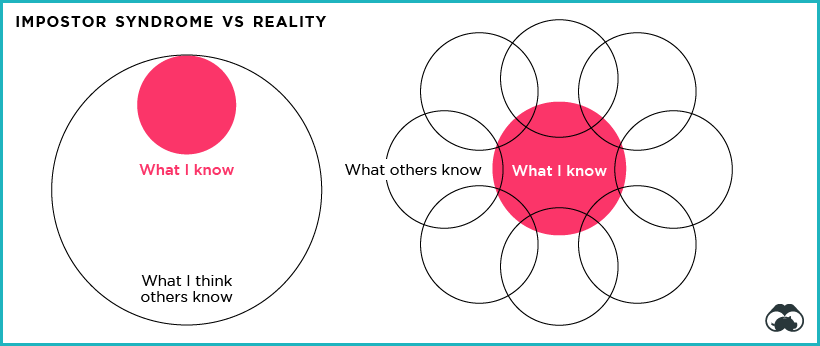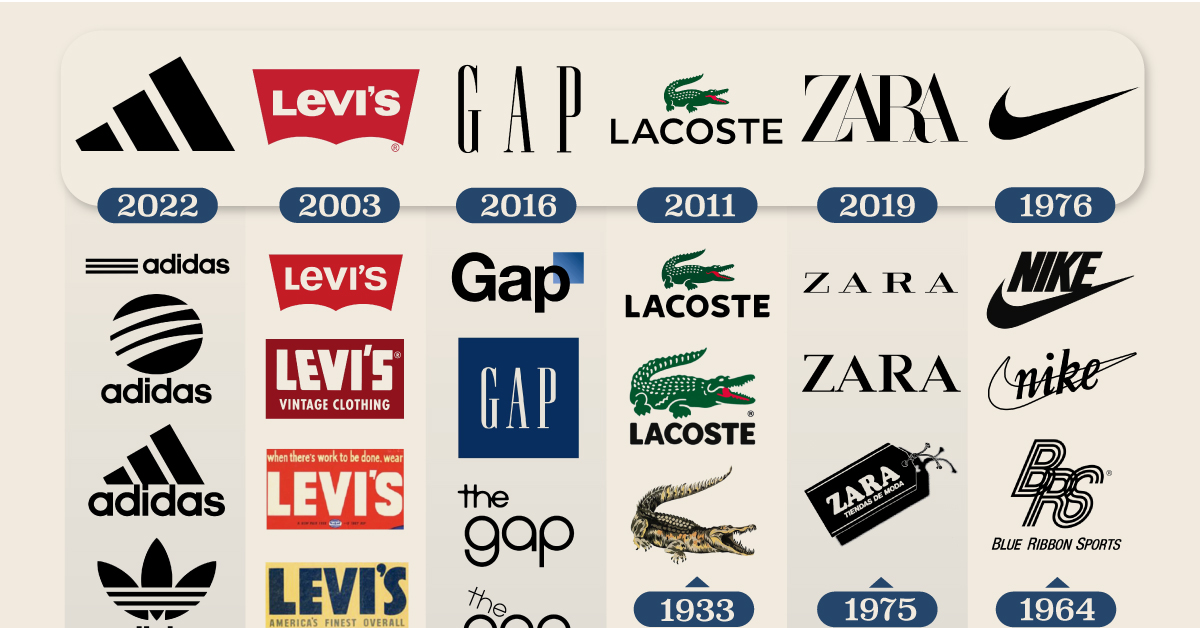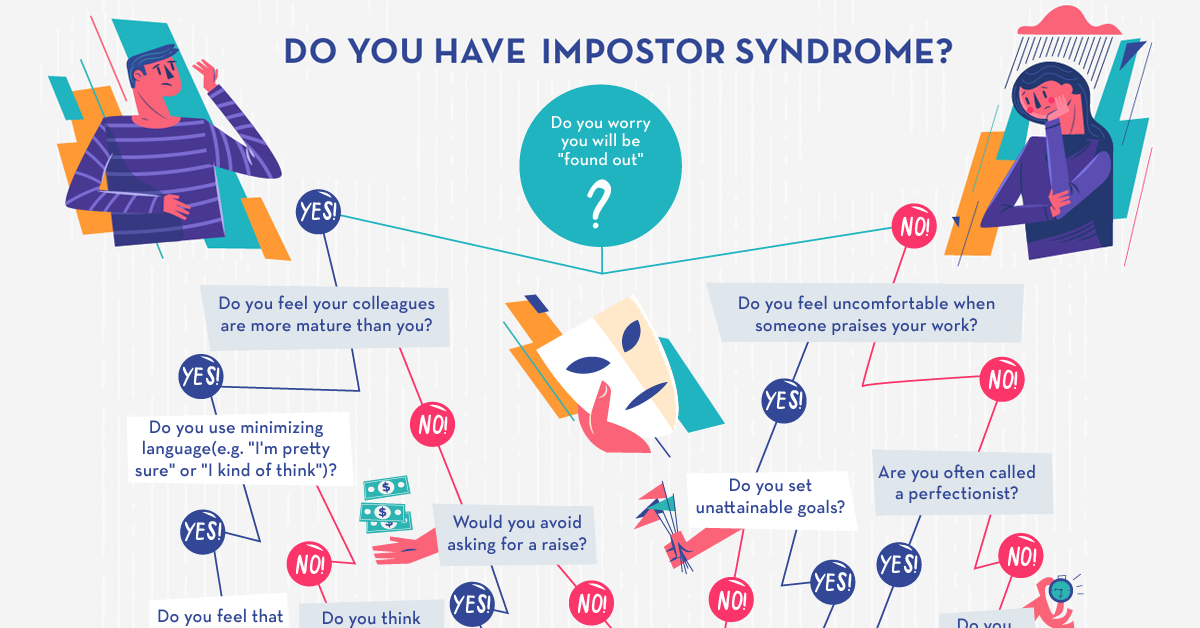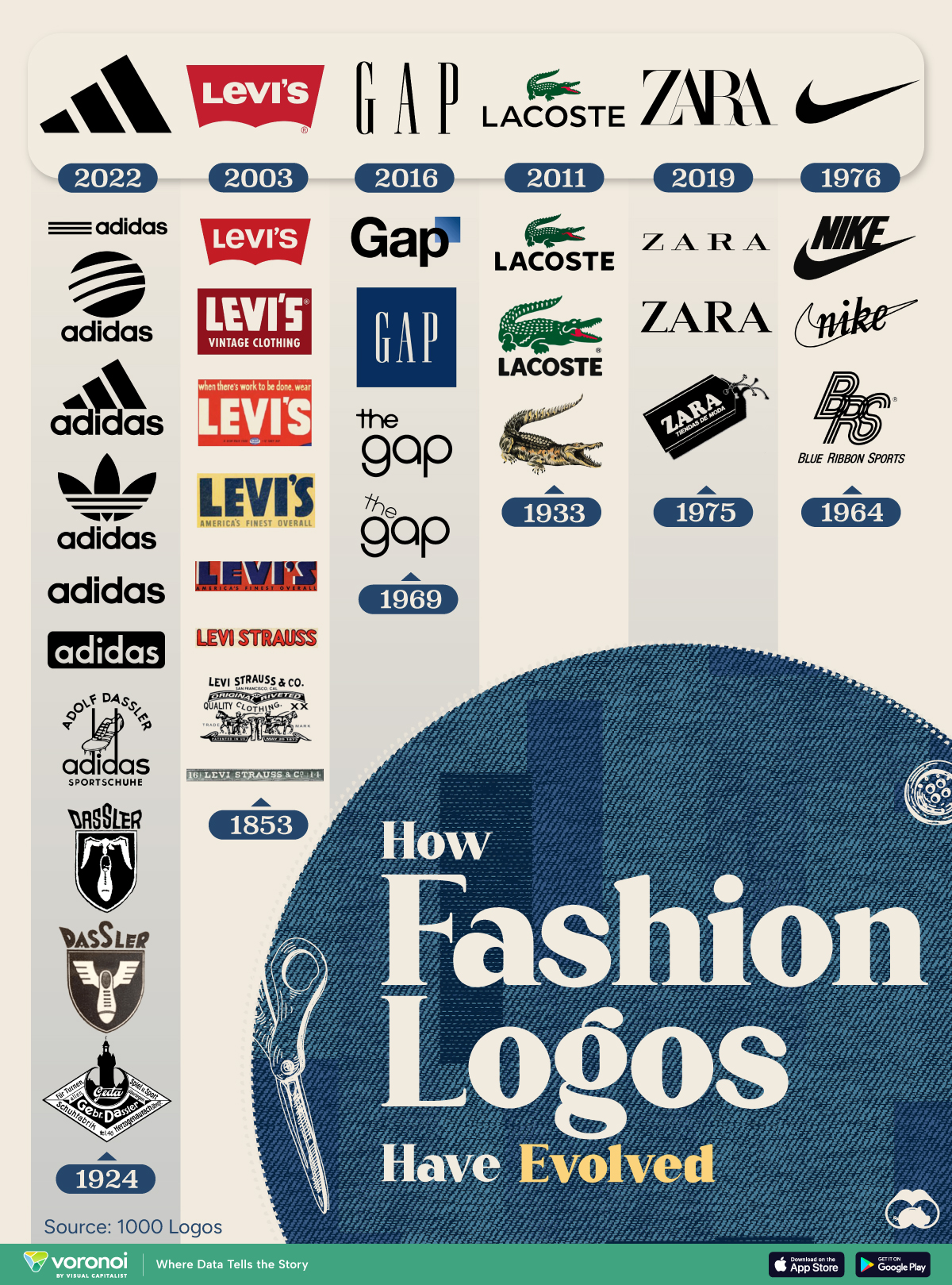Business
Are You Suffering From Impostor Syndrome?

Are You Suffering From Impostor Syndrome?
If you have ever felt unworthy of your position at work, or felt uncomfortable about receiving praise from colleagues, then you’re not alone.
The psychological pattern of impostor syndrome is widespread, with the majority of people experiencing some form of it over the course of their careers.
Today’s infographic, from Resume.io, provides a useful guide to identifying the various manifestations of impostor syndrome, and how to potentially overcome it.
What is Impostor Syndrome?
People suffering from impostor syndrome doubt their skills and accomplishments, live in fear of being exposed as not worthy of their position, and even downplay their success, attributing it all to luck or good fortune.

These feelings, which were first collectively known as “impostor phenomenon,” were introduced in a 1978 study of 150 highly successful women. Today, we have an even more nuanced view of how feelings of anxiety and inadequacy can afflict people in a professional setting.
Impostor Syndrome Archetypes
According to Dr. Valerie Young, a leading expert on the subject of impostor syndrome, these feelings of self doubt are not one-size-fits-all.
Here are the five different types of impostor syndrome:
| Number | Archetype | Description |
|---|---|---|
| #1 | Expert | You expect to know everything and feel ashamed when you don't. |
| #2 | Soloist | You believe work must be accomplished alone and refuse to take any credit if you received any kind of assistance. |
| #3 | Natural Genius | You tell yourself that everything must be handled with ease, otherwise it's not "natural talent". |
| #4 | Superperson | You feel you should be able to excel at every role you take on in your life. |
| #5 | Perfectionist | You set impossibly high standards for yourself and beat yourself up when you don't reach them. |
Understanding the different types of impostor syndrome is an important first step, as each manifestation requires a unique toolkit of solutions to help overcome this common psychological trap experienced by professionals.
Slaying Self Doubt
While impostor syndrome can afflict anyone, women have been shown to experience it more often – even once they have experienced high levels of success in their career.
A recent KPMG study of 750 high-performing executive women found that:
- 75% had experienced impostor syndrome at some point in their career
- 81% of these woman also believed they put more pressure on themselves than their male counterparts
Though progress has been made, lack of diversity at the C-suite level is still fueling some of these feelings. 32% of women identified with impostor syndrome because they did not know others in a similar place to them either personally or professionally.
When it came to combating feelings of self-doubt, many woman found support within their network and organizations:
- 72% said they looked to a mentor or trusted advisor for help and advice when the doubt creeps in
- 54% received support and guidance from performance managers
Actively creating a culture that supports honest conversations in the workplace is key to helping individuals slay professional self doubt.
Together, we have the opportunity to build corporate environments that foster a sense of belonging and lessen the experience of impostor syndrome for women in our workplaces.
– Laura Newinski, U.S. Deputy Chair and COO of KPMG
Business
Charted: How the Logos of Select Fashion Brands Have Evolved
For some fashion brands, changing logos mirror the constant loop of reinvention, over decades of building products, markets, and consumer bases.

Charted: How the Logos of Select Fashion Brands Have Evolved
This was originally posted on our Voronoi app. Download the app for free on iOS or Android and discover incredible data-driven charts from a variety of trusted sources.
A global fashion brand needs to balance maintaining a consistent style built painstakingly over the years while adapting to current trends. And for some of them, their changing logos reflect the loop of reinvention, over decades of building products, markets, and consumer bases.
We illustrate the evolution of six fashion companies’ logos over time. Data for the visualization and article is sourced from 1000logos.net.
Nike & Adidas: A Tale of Two Shoe Companies
The world’s largest footwear company, Nike began its journey as Blue Ribbon Sports in 1964. In 1971, they rebranded as Nike, inspired by the Greek goddess of victory.
The famous swoosh logo was designed in 1971 by Carolyn Davidson, at the time a Portland State University graphic design student. She was paid $35 dollars for her work (about $270 today). Twelve years later, Nike co-founder Phil Knight have her 500 Nike shares that have remained unsold.
Here’s how often some of the world’s biggest fashion brands have changed their logos since founding.
| Brand | Logo Changes |
|---|---|
| 👟 Adidas | 10 |
| 👖 Levi's | 8 |
| ✔️ Nike | 4 |
| 👕 Gap | 4 |
| 🐊 Lacoste | 3 |
| 👗 Zara | 3 |
Meanwhile, Adidas has far older origins: all the way back to 1920 Germany. Founded by Adolf Dassler, the company split into Adidas and Puma in 1947.
Dassler bought the iconic three stripes from another German sports company in 1947. In 1952, the stripes debuted on Adidas footwear at the Summer Olympics.
Currently, Adidas has several concurrent logos depending on the product line. This includes: the horizontal across a trefoil (Adidas Originals), curved across a circle (Adidas Style) or the diagonal mountain above the brand name (Adidas Performance).
-

 Demographics7 days ago
Demographics7 days agoMapped: U.S. Immigrants by Region
-

 United States2 weeks ago
United States2 weeks agoCharted: What Southeast Asia Thinks About China & the U.S.
-

 United States2 weeks ago
United States2 weeks agoThe Evolution of U.S. Beer Logos
-

 Healthcare2 weeks ago
Healthcare2 weeks agoWhat Causes Preventable Child Deaths?
-

 Energy1 week ago
Energy1 week agoWho’s Building the Most Solar Energy?
-

 Markets1 week ago
Markets1 week agoMapped: The Most Valuable Company in Each Southeast Asian Country
-

 Technology1 week ago
Technology1 week agoMapped: The Number of AI Startups By Country
-

 Healthcare1 week ago
Healthcare1 week agoLife Expectancy by Region (1950-2050F)



